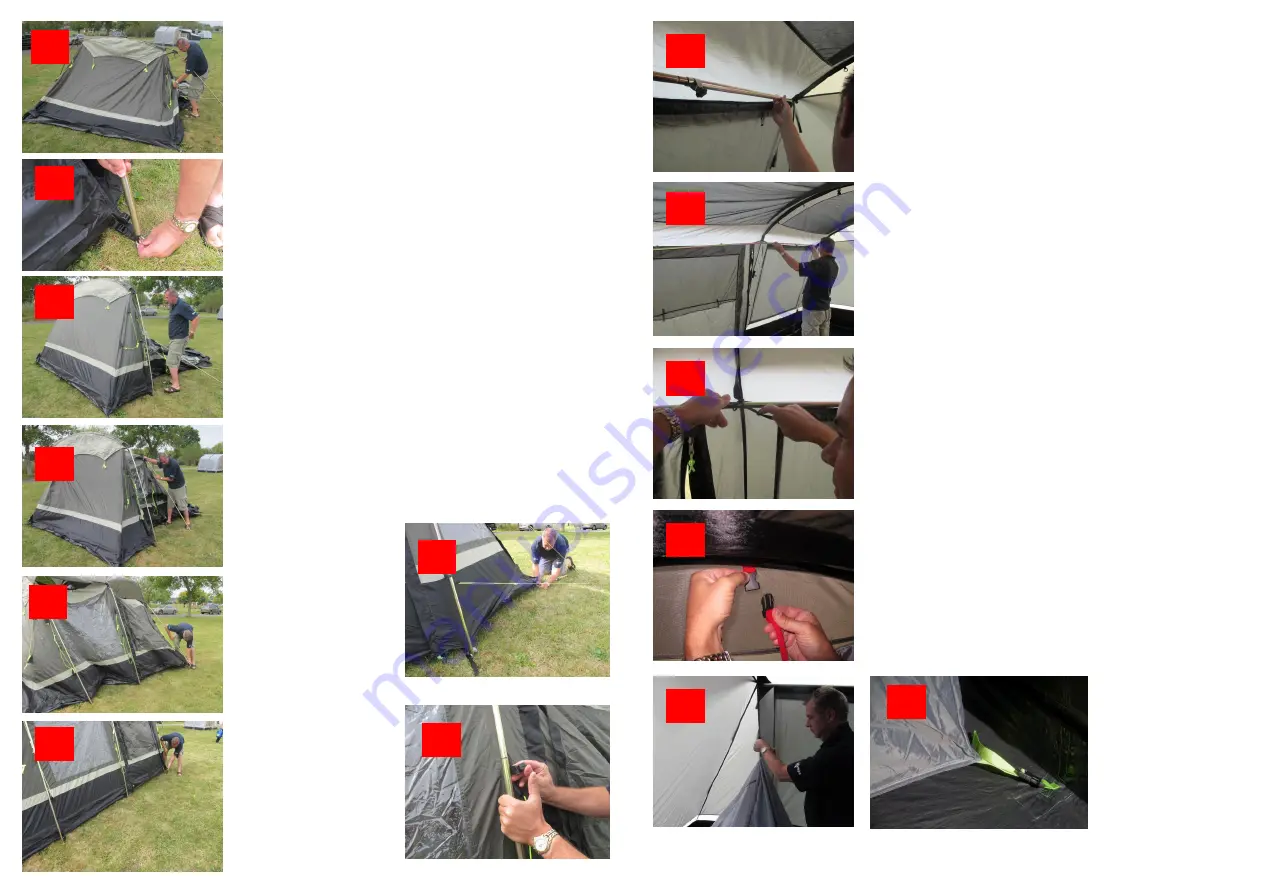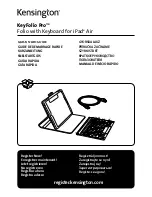
4
Ensure that the front door is open and then stand the
two rear legs upright (8). Locate the pin, on the key
ring at the base of the tent, into the bottom of each
steel leg (9). The key ring is on an adjustable strap
that can be loosened to make this easier. Remember
to tighten the straps afterwards (10).
Repeat with the intermediate set of legs (11) and then
with the front legs (12).
Close all doors and entrances.
Pull the front of the awning out tensioning both sides of
the awning (13) Peg the front corners ensuring that it
is square (14). You may have to re-peg this later.
Attach all the plastic clips onto the respective steel
legs (15).
Check that the whole awning is square, It is necessary
to pull each corner pegging point diagonally to create
tension in the awning. Peg the intermediate pegging
points, pegging the points either side of doorways first.
These doorways should be cross pegged - the points
should be pulled across each other. Once completed
the awning should look taut without too many creases -
if necessary readjust the pegging.
8
9
10
11
13
15
14
12
5
16
17
20
21
18
Take the steel stretcher poles into the awning. Put
one end in the pocket at the front corner of the awning
(16) and the other end in the pocket in the opposite
corner. Tension and tighten the thumbscrew (17).
Repeat with the other stretcher bars. Tie the interme-
diate tie tapes around the stretcher bars to support
them (18).
Take the inner tent inside the awning and hang from
the suspension points, ensuring the door is at the front
(19/20). Some of the suspension points are colour
coded. Attach the base of the inner to the correspond-
ing buckles on the groundsheet (21). It will be easier
to attach the rear points before fully suspending the
inner tent.
19






















